-
 Bitcoin
Bitcoin $118100
-0.44% -
 Ethereum
Ethereum $3585
5.43% -
 XRP
XRP $3.434
5.65% -
 Tether USDt
Tether USDt $1.000
0.02% -
 BNB
BNB $743.8
3.89% -
 Solana
Solana $178.7
3.84% -
 USDC
USDC $1.000
0.03% -
 Dogecoin
Dogecoin $0.2381
12.81% -
 TRON
TRON $0.3270
3.62% -
 Cardano
Cardano $0.8315
4.93% -
 Hyperliquid
Hyperliquid $44.51
-4.42% -
 Stellar
Stellar $0.4710
1.52% -
 Sui
Sui $3.896
-2.51% -
 Chainlink
Chainlink $18.09
6.98% -
 Hedera
Hedera $0.2681
9.31% -
 Bitcoin Cash
Bitcoin Cash $516.7
4.83% -
 Avalanche
Avalanche $23.95
6.96% -
 Shiba Inu
Shiba Inu $0.00001490
5.67% -
 UNUS SED LEO
UNUS SED LEO $8.966
0.80% -
 Toncoin
Toncoin $3.294
4.39% -
 Litecoin
Litecoin $105.4
4.69% -
 Polkadot
Polkadot $4.356
5.30% -
 Uniswap
Uniswap $10.29
17.25% -
 Monero
Monero $327.9
-3.04% -
 Bitget Token
Bitget Token $4.942
4.33% -
 Ethena USDe
Ethena USDe $1.001
0.08% -
 Pepe
Pepe $0.00001348
2.17% -
 Dai
Dai $1.000
0.02% -
 Aave
Aave $320.8
0.58% -
 Bittensor
Bittensor $411.8
-4.07%
From Beginner to Master: A Complete Learning Guide for Crypto K-line Chart Analysis
K-line charts reveal crypto price trends through candlestick patterns like hammers and engulfing formations, helping traders spot reversals and market sentiment.
Jun 10, 2025 at 11:36 pm

Understanding the Basics of K-line Charts
K-line charts, also known as candlestick charts, are a fundamental tool in cryptocurrency trading. Originating from Japan, these charts provide detailed insights into price movements over specific time intervals. Each K-line represents four key data points: the opening price, closing price, highest price, and lowest price during a given period. The body of the candle indicates the range between the open and close, while the wicks (or shadows) show the high and low extremes.
For beginners, it’s crucial to recognize the difference between bullish and bearish candles. A bullish candle, typically colored green or white, forms when the closing price is higher than the opening price. Conversely, a bearish candle, usually red or black, appears when the closing price is lower than the opening price. Understanding these visual signals helps traders interpret market sentiment at a glance.
Identifying Common K-line Patterns
Once you’re comfortable with the basic structure of K-line charts, learning common patterns becomes essential. These patterns can indicate potential reversals or continuations in price trends. Some widely recognized patterns include:
- Hammer: A single candlestick pattern that suggests a potential reversal from a downtrend. It has a small body near the top and a long lower wick.
- Shooting Star: Opposite of the hammer, this pattern appears at the end of an uptrend and features a small body near the bottom with a long upper wick.
- Engulfing Pattern: This consists of two candles where the second candle completely engulfs the first one, signaling a possible trend reversal.
- Doji: Represents indecision in the market. It occurs when the opening and closing prices are almost equal, forming a cross-like shape.
Recognizing these patterns early can help traders make more informed decisions about entry and exit points.
Reading Volume Alongside K-line Charts
Volume plays a critical role in validating K-line patterns and price movements. High volume during a particular candle often confirms the strength behind a move. For instance, if a bullish engulfing pattern forms on a chart with unusually high volume, it increases the likelihood of a successful reversal.
Traders should look for confluence between volume spikes and significant candlestick formations. Low volume during what seems like a strong move may suggest weakness in the trend. Tools such as volume bars or on-balance volume (OBV) indicators can be used alongside K-line analysis to enhance decision-making accuracy.
It's also important to note divergences between volume and price. If the price is rising but volume is declining, it could signal that the rally is losing momentum.
Combining K-line Analysis with Technical Indicators
While K-line charts offer valuable insights, combining them with technical indicators can improve their reliability. Popular indicators that complement candlestick analysis include:
- Moving Averages (MA): Help identify the direction of the trend. When a candle closes above a key moving average, it might signal a continuation of the uptrend.
- Relative Strength Index (RSI): Measures overbought or oversold conditions. A bullish K-line pattern appearing when RSI is below 30 may increase the probability of a reversal.
- Bollinger Bands: Show volatility and potential reversal zones. Candles touching or breaking out of the bands can serve as trade signals when combined with K-line patterns.
Using multiple tools together creates a more robust analytical framework. However, it's vital not to overload your charts with too many indicators, which can lead to confusion and conflicting signals.
Practicing Risk Management with K-line Signals
Even the most accurate K-line signals can fail without proper risk management. Setting stop-loss orders based on candlestick structures helps protect capital. For example, placing a stop just below the low of a hammer pattern ensures limited losses if the expected reversal doesn’t materialize.
Position sizing should also align with the confidence level of the K-line setup. Stronger patterns backed by volume and other indicators may justify larger positions, while ambiguous signals warrant smaller trades or no action at all.
Additionally, keeping a trading journal to record each K-line-based trade allows for continuous improvement. Reviewing past trades helps identify strengths and weaknesses in applying candlestick analysis effectively.
Frequently Asked Questions (FAQs)
What is the best time frame for analyzing K-line charts in crypto trading?
The ideal time frame depends on your trading style. Day traders often use 1-minute to 15-minute charts, while swing traders prefer 1-hour to daily charts. Higher time frames generally offer more reliable signals due to reduced noise and increased volume.
Can K-line patterns work across different cryptocurrencies?
Yes, K-line patterns apply universally across all tradable assets, including various cryptocurrencies. However, liquidity differences may affect how reliably these patterns perform. Major coins like Bitcoin and Ethereum tend to follow candlestick logic more consistently than lesser-known altcoins.
How do I distinguish between a real K-line reversal and a fakeout?
A genuine reversal is often supported by high volume, confirmation from other indicators, and follow-through in subsequent candles. Fakeouts usually lack volume support and fail to maintain price beyond key levels. Always wait for additional confirmation before acting on a reversal signal.
Is it necessary to learn Western technical analysis along with K-line charts?
While K-line charts are powerful on their own, integrating Western technical analysis tools like trendlines, support/resistance levels, and Fibonacci retracements can significantly enhance your trading strategy. Combining both approaches provides a more comprehensive view of market dynamics.
Disclaimer:info@kdj.com
The information provided is not trading advice. kdj.com does not assume any responsibility for any investments made based on the information provided in this article. Cryptocurrencies are highly volatile and it is highly recommended that you invest with caution after thorough research!
If you believe that the content used on this website infringes your copyright, please contact us immediately (info@kdj.com) and we will delete it promptly.
- Freedom Gold Pack: The Legacy Coin Defining 2025
- 2025-07-19 06:30:13
- Trump, the GENIUS Act, and Stablecoin Regulations: A New Era for Crypto?
- 2025-07-19 06:50:12
- Pi Network's Ecosystem Challenge: App Studio Sparks Innovation
- 2025-07-19 06:55:13
- Zebec Network's Bullish Engulfing Pattern: Price Forms and Future Outlook
- 2025-07-19 06:30:13
- XRP, Ripple, Bitcoin, Ethereum: Decoding the Crypto Landscape
- 2025-07-19 05:50:13
- Penny Altcoins Eyeing $1 in Q3 2025: Cardano, BlockchainFX, and the Hunt for Crypto Gold
- 2025-07-19 05:10:13
Related knowledge
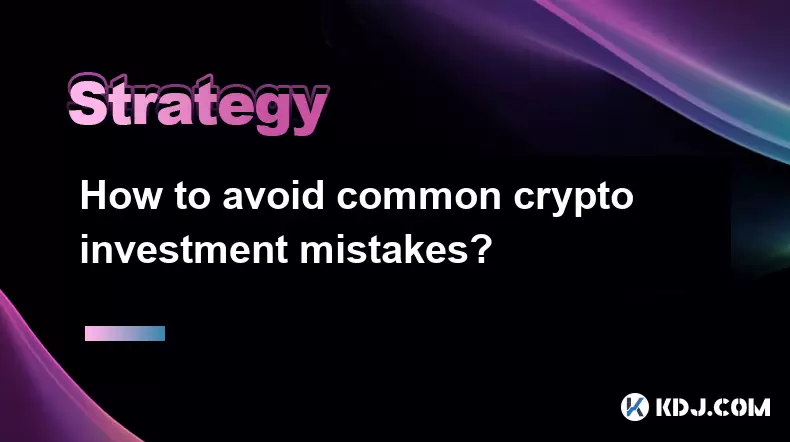
How to avoid common crypto investment mistakes?
Jul 13,2025 at 01:35am
Understanding the Risks of Crypto InvestmentInvesting in cryptocurrency can be highly rewarding, but it also comes with significant risks. One of the ...
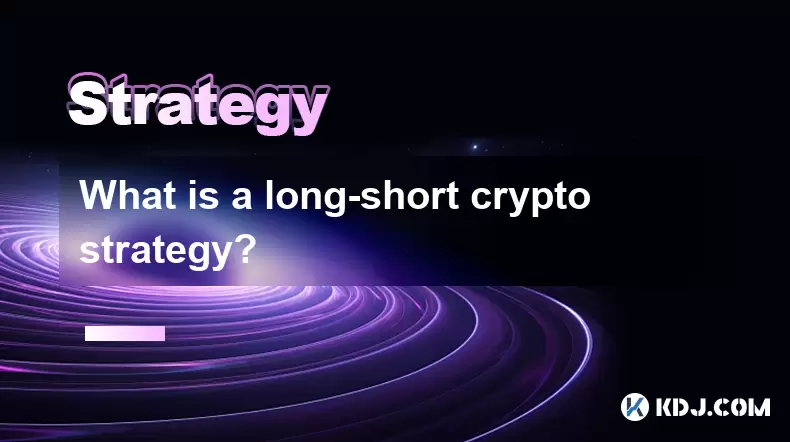
What is a long-short crypto strategy?
Jul 15,2025 at 10:56am
Understanding the Basics of a Long-Short Crypto StrategyA long-short crypto strategy is an investment approach where traders simultaneously take long ...
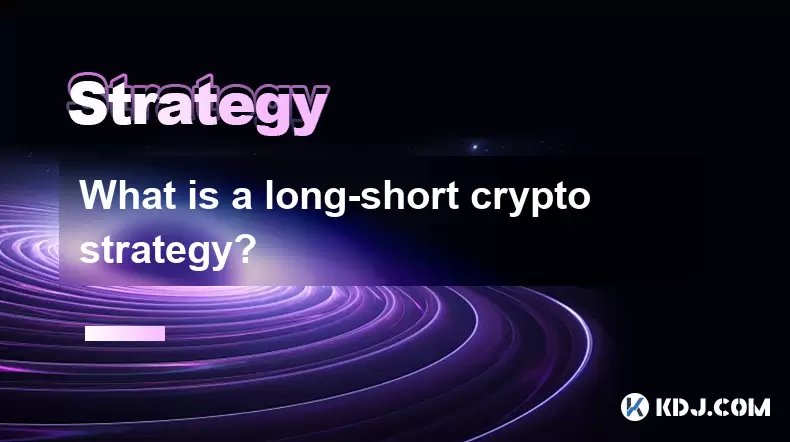
What is a long-short crypto strategy?
Jul 11,2025 at 01:28pm
Understanding the Basics of Long-Short Crypto StrategyA long-short crypto strategy is an investment approach where traders take both long and short po...
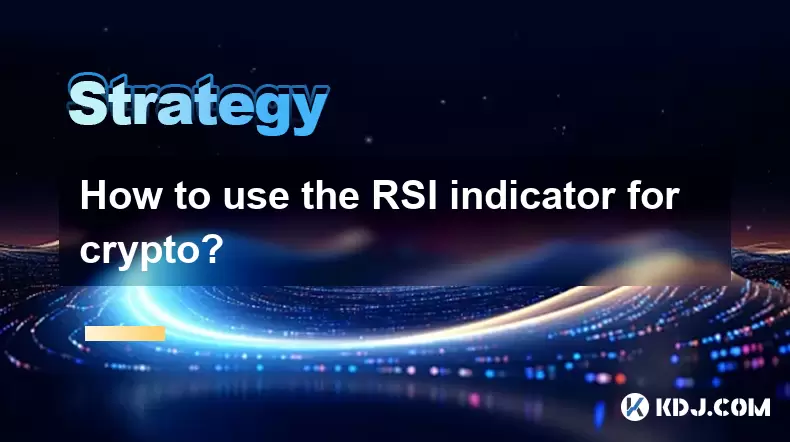
How to use the RSI indicator for crypto?
Jul 12,2025 at 03:56pm
Understanding the RSI Indicator in Cryptocurrency TradingThe Relative Strength Index (RSI) is a momentum oscillator used to measure the speed and chan...

Is copy trading a good strategy for crypto beginners?
Jul 12,2025 at 08:28am
Understanding Copy Trading in the Cryptocurrency MarketCopy trading is a strategy where novice traders replicate the trades of experienced investors a...
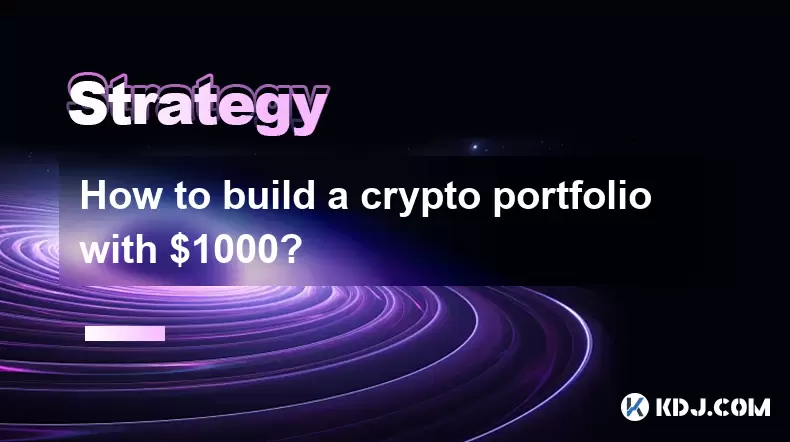
How to build a crypto portfolio with $1000?
Jul 13,2025 at 08:14pm
Understanding the Basics of Cryptocurrency InvestmentBuilding a crypto portfolio with $1000 starts with understanding the fundamentals of cryptocurren...

How to avoid common crypto investment mistakes?
Jul 13,2025 at 01:35am
Understanding the Risks of Crypto InvestmentInvesting in cryptocurrency can be highly rewarding, but it also comes with significant risks. One of the ...

What is a long-short crypto strategy?
Jul 15,2025 at 10:56am
Understanding the Basics of a Long-Short Crypto StrategyA long-short crypto strategy is an investment approach where traders simultaneously take long ...

What is a long-short crypto strategy?
Jul 11,2025 at 01:28pm
Understanding the Basics of Long-Short Crypto StrategyA long-short crypto strategy is an investment approach where traders take both long and short po...

How to use the RSI indicator for crypto?
Jul 12,2025 at 03:56pm
Understanding the RSI Indicator in Cryptocurrency TradingThe Relative Strength Index (RSI) is a momentum oscillator used to measure the speed and chan...

Is copy trading a good strategy for crypto beginners?
Jul 12,2025 at 08:28am
Understanding Copy Trading in the Cryptocurrency MarketCopy trading is a strategy where novice traders replicate the trades of experienced investors a...

How to build a crypto portfolio with $1000?
Jul 13,2025 at 08:14pm
Understanding the Basics of Cryptocurrency InvestmentBuilding a crypto portfolio with $1000 starts with understanding the fundamentals of cryptocurren...
See all articles



























































